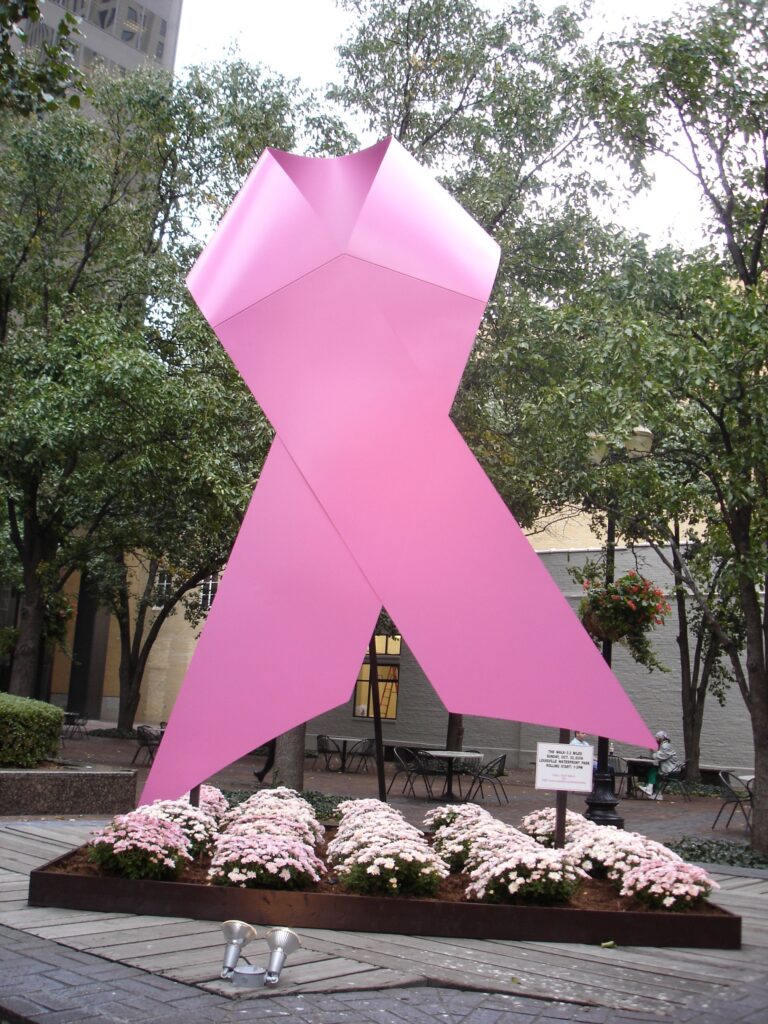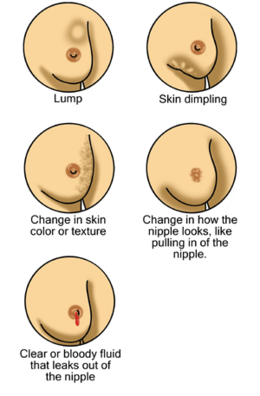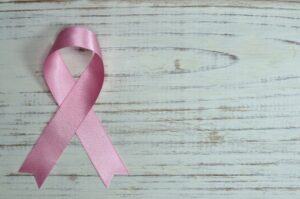The month of October: Let’s remind ourselves about the Prevention and Awareness for Breast Cancer

Shuvomoy Banerjee, PhD; Neucrad Health desk, October15, 2020
At a time when people are deeply concerned about the risk of Covid-19 infection, let’s not forget Breast cancer, which has still not stopped taking its toll on people’s lives. Of note, this particular month i.e. October marks for the awareness of Breast Cancer! According to data, breast cancer has topped over cervical cancer incidents as a cause of women’s mortality.
A study conducted by the Indian Council of Medical Research (ICMR) revealed 14.5 million breast cancer cases in 2016. Ironically, the rate of breast cancer has actually increased between the last 3 years as reported by the Indian Statistics and scientists are afraid that it may exceed 17.5 million by the end of this year i.e. 2020!

To spread awareness about this disease and know the ways of its prevention, let’s understand the important aspects of breast cancer here.
Breast Cancer:
Tumors in the breast occur as a result of the uncontrolled division of mammary gland cells. Cells from breast tumors may or may not spread to other places of the body depending upon the nature of the tumor which is either malignant or benign. In case, if the tumor is malignant, the cells spread throughout the body via the bloodstream, creating a new tumor in another organ. This phenomenon is called ‘metastatic breast cancer’. Metastatic tumors that appear directly in the mammary gland are called lobular carcinomas whereas tumors of the mammary ducts are designated as ductal carcinomas. Interestingly, men also get breast cancer in their lifetime, but the chances are as little as 1%.
Stages of Breast Cancer:
According to the severity and malignancy of breast tumors, there can be a total of 4 different stages of breast cancers:
- Stage-1: At this stage, the tumor is very small in size and is only confined to the mammary gland. By doing the timely and appropriate treatment, it is possible to cure such stages of breast cancer.
- Stage-2: Here, the visible tumor is about 2 cm in size. Local lymph nodes and ribs of the chest become affected by the cancer cells in this stage.
- Stage-3: The tumor grows in size and becomes 5 cm. The tissues around the mammary glands and a large number of lymph nodes are also seen to be affected.
- Stage-4: At this stage, regardless of the size of the tumor, breast cancer cells can spread to other parts of the body including, the lungs, liver, bones, distal lymph nodes, and the brain. Stage-4 breast cancer patient’s life is at great risk.
Symptoms of Breast Cancer:

It is important to consult a doctor or physician immediately if one finds the signs and symptoms of breast cancer. The following are the common and known symptoms of Breast Cancer Patients-
- Visible or feelings of hard swelling in or near the mammary glands.
- Changes in the size and shape of the mammary gland.
- Discharge of yellow or bloody secretions from the mammary glands.
- Color change and persistent inflammation of the skin of the nipple.
- Changes in the size and shape of the nipple.
Causes and prevention of breast cancer:
The exact causes of breast cancer are yet not clear and understood. However, scientific research has proved that there are Uncontrollable as well as Controllable causes for Breast Cancer.
Uncontrollable causes: Age, congenital size of breasts, race (white women are found more prone to breast cancer!), long-term radiation therapy, genetic mutations (if parents have mutations like BRCA1/2, HER-2, CHK-2, TPP53, etc. in their chromosomes) can cause cancer. These factors are difficult to control.
Controllable causes:
- The more active one’s daily life is, the less likely the person may develop breast cancer.
- Alcohol consumption should be avoided. It has been scientifically proven that excessive alcohol drinking can lead to breast cancer in women.
- Menopause can sometimes lead to extra weight gain, which can lead to the onset of breast cancer. It is highly advisable for everyone to exercise daily for some time.
- There is also a chance of getting breast cancer with constant use of contraceptive pills and hormones during sex-life.
- Several studies have shown that women who have children after the age of 30 and do not continue to breastfeed have a higher risk of developing breast cancer too.
Role of cellular factors for breast cancer progression:
Scientists have found some specific genes and cellular proteins playing a key role in breast cancers:
i) Estrogen receptor (ER) and progesterone receptor (PR): These two hormone receptors are found in excess in breast cancer cells. In addition, excessive secretion of the hormone estrogen in the female body causes the estrogen receptor to become overactive and to continuously send molecular signaling to the mammary cells, causing the cells to divide uncontrollably and form tumors. Significantly, the amount of estrogen hormone decreases during breastfeeding, as well as the interval between menstrual periods in women. As a result, the tendency to get breast cancer is less during the entire period of breastfeeding due to less exposure to estrogen.
ii) Human Epidermal Growth Factor Receptor-2 (HER-2): This tyrosine kinase protein receptor has special properties. Normally, a receptor protein is activated when a ligand molecule is attached to it and sends molecular signals to the cell. But this receptor is always active on its own (Constitutive activation) without the binding of ligand molecules, so a constant signal of cell division is transmitted inside the cell, and tumors are formed.
iii) Ki-67 Antigen: This particular antigen is released between important phases of the cell cycle (mainly in the S-phase or synthesis phase) and helps cells to divide rapidly.
iv) Tumor Protein 53 (TP53): This very important protein fights against cancer, so it is called “Tumor Suppressor Protein“. The normal functioning of the TP53 protein in breast cancer cells is disrupted (mainly for mutations) resulting in uncontrolled cell division)
V) Breast Cancer Susceptibility Gene Family (BRCA1 / BRCA2): Proteins coded by these genes act as tumor suppressors. Their main function is to control cell division, cell differentiation, cell cycle, etc. Mutations in the BRCA1 / BRCA2 genes produce inactive or abnormal proteins that interfere with the essential cellular functions and cause breast cancer.
Treating and controlling Breast Cancer:

Doctors examine suspected patients for breast cancer by performing mammograms (special X-rays of the breast), Magnetic resonance imaging (MRI) scan, Positron emission tomography (PET) scan, ultrasound imaging, and biopsy examination. The stage of breast cancer can be investigated with the help of immunohistochemistry (IHC). Breast cancer is then treated with surgery, radiation, and various chemotherapeutic drugs (Tamoxifen, Abemaciclib, Abraxane, Raloxifene, Aromatase Inhibitor, EGFR-Blockers, etc.) depending on the stages and pathophysiological conditions of cancer. Recently, a new drug called Tucatinib was approved by the FDA (Food and Drug Administration) to reduce tumor burden specifically in HER2-positive metastatic breast cancer patients.
Conclusion:
Scientific research and public awareness are crucial to prevent breast cancer effectively. This October and throughout the year, let’s remind ourselves and spread Breast cancer awareness to others. Remember that with the help of Genetic counseling, appropriate cancer therapies, and management, it is now possible to predict as well as treat breast cancer. Fortunately, the advancements of medical science have now been able to provide a healthy life to even Stage-4 breast cancer patients. Awareness campaigns, counselings are needed to be arranged on a regular-basis at educational institutions, offices, and in public places around the country to let people know more about breast cancer incidents, causes, and effective treatment options.
References
- Sun YS, Zhao Z, Yang ZN, et al. Risk Factors and Preventions of Breast Cancer. Int J Biol Sci. 2017;13(11):1387-1397. Published 2017 Nov 1. doi:10.7150/ijbs.21635
- Sharma GN, Dave R, Sanadya J, Sharma P, Sharma KK. Various types and management of breast cancer: an overview. J Adv Pharm Technol Res. 2010;1(2):109-126.
- Feng Y, Spezia M, Huang S, et al. Breast cancer development and progression: Risk factors, cancer stem cells, signaling pathways, genomics, and molecular pathogenesis. Genes Dis. 2018;5(2):77-106. Published 2018 May 12. doi:10.1016/j.gendis.2018.05.001
- Akram M, Iqbal M, Daniyal M, Khan AU. Awareness and current knowledge of breast cancer. Biol Res. 2017;50(1):33. Published 2017 Oct 2. doi:10.1186/s40659-017-0140-9
- Gupta A, Shridhar K, Dhillon PK. A review of breast cancer awareness among women in India: Cancer literate or awareness deficit?. Eur J Cancer. 2015;51(14):2058-2066. doi:10.1016/j.ejca.2015.07.008
- Moo TA, Sanford R, Dang C, Morrow M. Overview of Breast Cancer Therapy. PET Clin. 2018;13(3):339-354. doi:10.1016/j.cpet.2018.02.006
- Waks AG, Winer EP. Breast Cancer Treatment: A Review. JAMA. 2019 Jan 22;321(3):288-300. doi: 10.1001/jama.2018.19323. PMID: 30667505.







